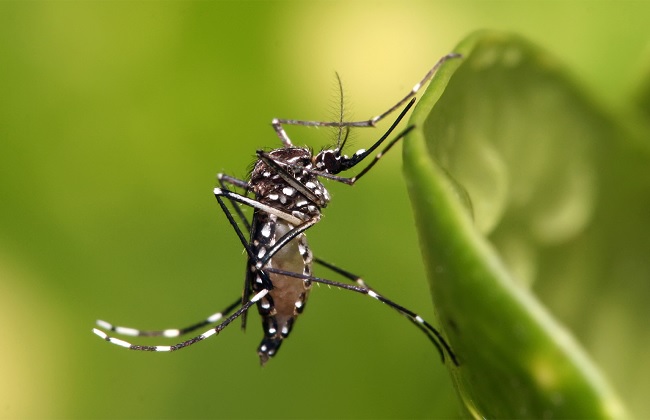
When eight-year-old Samin developed a fever a few days ago, his parents thought it was the seasonal flu. However, in two days, his condition worsened as he began to complain of abdomen pain, fatigue and vomiting.
“We saw a drastic change in him. Our once agile child became pale and listless,” said Samin’s father Rahmatullah, from the middle-income dominated and densely populated Mirpur area in Dhaka.
Worried and anxious, he took Samin to Bangabandhu Sheikh Mujib Medical University, where they found that Samin had contracted dengue and his platelet count had dropped to 40,000 against the healthy count of 150,000 to 400,000 platelets. Samin was admitted to the hospital, but his condition continued to deteriorate as his blood pressure fell, prompting doctors to transfer him to the intensive care unit.
Rahmatullah said they were wondering why, despite their best efforts to keep dengue away, Samin caught the disease. They applied sprays, used mosquito nets while sleeping, kept their house clean and drained the potential breeding sources in their home — the usual cautions that authorities have always prescribed to keep the dengue viral carriers, Aedes mosquitoes, away.
Samin is among a record 80,000 people who have fallen ill with dengue in Bangladesh this year so far — a surge that scientists say could be fueled by climate change. An influx of patients has overwhelmed the hospitals in Bangladesh, especially its capital — a reminder of the worst days of the COVID-19 pandemic.
The death toll from Bangladesh’s dengue outbreak in 2024 is 415 as of Nov. 18, with 80,000 infected, according to the official data of Bangladesh’s directorate general of health services. Hospitals have struggled to cope with the rising number of patients in the densely populated country.
In 2023, Bangladesh recorded 1,705 dengue-related deaths, the highest annual toll to date. This contrasts sharply with 281 deaths reported in 2022 and 179 in 2019.
A typical consequence of climate change, drier monsoons with sudden bursts of heavy rains has led to days of inundation with long periods of standing water, creating an ideal situation for breeding mosquitoes, which may be linked to the stronger outbreak of dengue this year.
There have been visible shifts in the span and behavior of the monsoon season in Bangladesh. From its usual stay from June to August, the season has moved to July to early October and gotten longer.
Even a decade ago, monsoons were characterized by usual drizzles, moderate downpours and occasional heavy rains on most days during the two months. Nowadays, however, the total rainfall hasn’t changed during this period — there are much fewer rainy days, but on days when it rains, it is significantly heavier than before. As a result, a lot of rain over a short period of time means more standing water.
The situation has been worsened by eternally poor drainage, especially in urban areas, with already-precarious sanitation and difficulty in accessing timely medical assistance in the event of an infection transmitted by the mosquitoes.
The increase in rainfall due to climate change means that a disease previously linked only to the rainy season is becoming a risk all year round and, for several experts, it is close to becoming a global pandemic.
Dengue fever has no cure, and prevention is almost exclusively possible by fighting the insect — identifiable by its black and white striped legs — that carries it, and it’s proved hard to eradicate.
A study in Bangladesh found that maximum and minimum temperatures, humidity and wind speed were positively correlated with dengue cases while rainfall and sunshine hours were negatively associated with dengue cases.
Around the world, dengue incidences have sharply increased, with Asia accounting for 70% of occurrences, according to WHO. It said that half of the world’s population, that’s 3.9 billion people, are at risk of infection.
“Climate change is fundamentally altering the behavior and breeding patterns of Aedes mosquitoes. Once confined to summers, these mosquitos now thrive year-round, even in the winters,” Kabirul Bashar, an entomologist at Jahangirnagar University, told Mongabay.
He said that the changing rain patterns and humidity levels are reshaping the mosquitoes’ adaptation, leading to unprecedented biting behaviors that extend into the night.
“This shift underscores the urgent need to address climate change and its far-reaching impacts on public health,” said Kabirul, who has been researching dengue for more than a decade. He add that high temperature and humidity, coupled with rapid urbanization and intermittent rains, make the region vulnerable to dengue outbreak.
However, climate change is not the only factor encouraging Aedes mosquitoes in winter. Other reasons include the tendency to preserve water in winter due to water scarcity and unplanned urbanization.
Kabirul says temperatures ranging from 27-32 degrees Celsius are ideal for breeding Aedes mosquitoes. Global warming has ensured that there are now more warm days, which is also the case in Bangladesh, where winters are becoming shorter, warmer and more humid every year, giving Aedes more time to breed.
Md. Bazlur Rashid, from the Bangladesh’s meteorological department, said that extreme climatic events, such as longer heatwaves and more rainfall in shorter spells, are becoming more common in the country.
A recent report by the meteorological department found that the average rainfall during this period has not changed, but the number of rainy days decreased.
“As the world warms, weather patterns are changing significantly. The evaporation rate and the atmosphere’s capacity to hold moisture increase, resulting in more intense rainfall over shorter durations. There is no denying that these shifts in weather patterns are happening,” said AKM Saiful Islam, a professor at Bangladesh University of Engineering and Technology and one of the lead authors of IPCC’s 2021 report.
According to a 2019 study, an additional 2 billion people worldwide may be in danger of contracting dengue in the next 50 years if immediate steps are not taken to control the virus and limit climate change.
“We predict that 3.83 [3.45–4.09] billion people [roughly 53% of the global population] live in areas that are suitable for dengue transmission, with the vast majority in Asia, followed by Africa and the Americas,” said the study.
Despite the efforts of governments and national and international organizations to combat its spread, dengue remains a threat. However, although the number of cases has risen, mortality is down.
(This article was republished from the Mongabay under Creative Commons License)
Mohammad Al-Masum Molla is the Chief Reporter of The Daily Star


